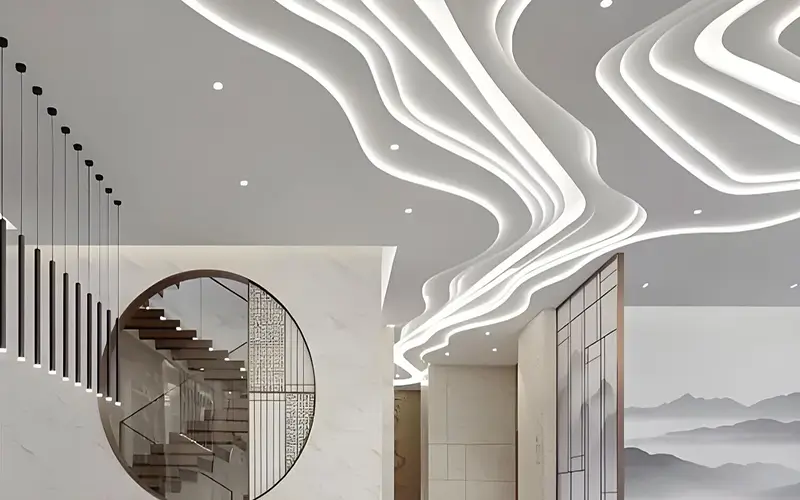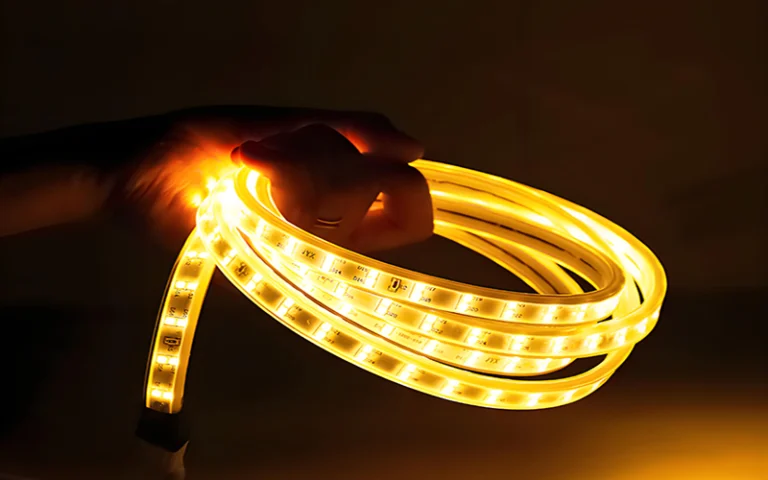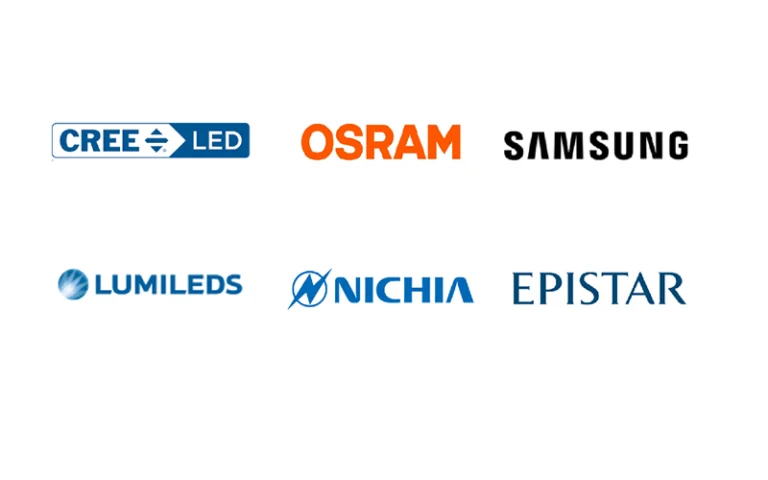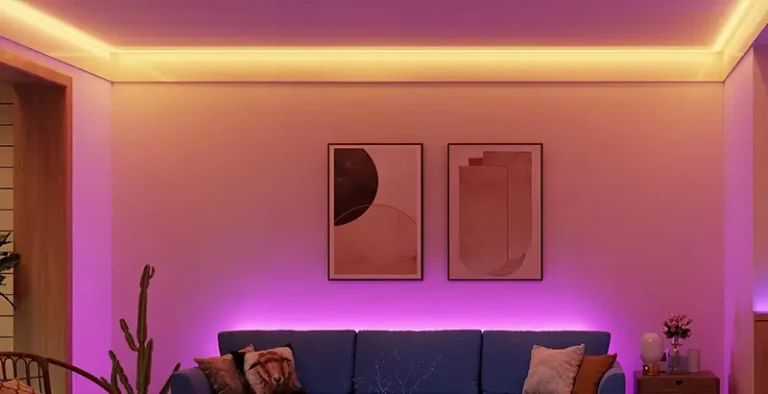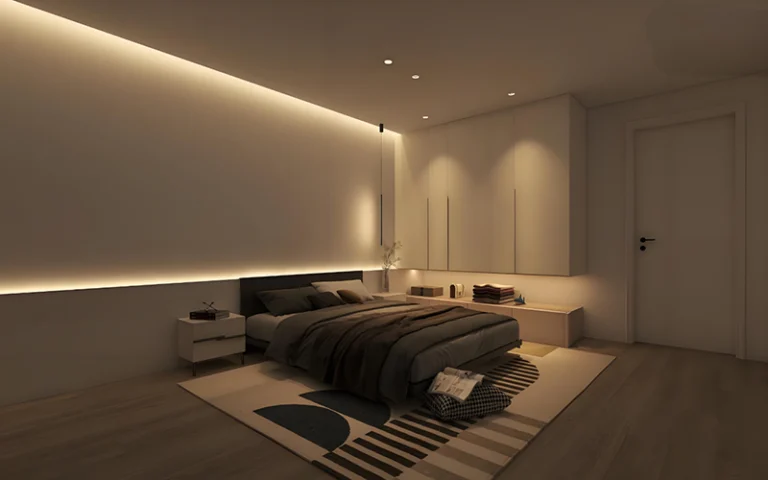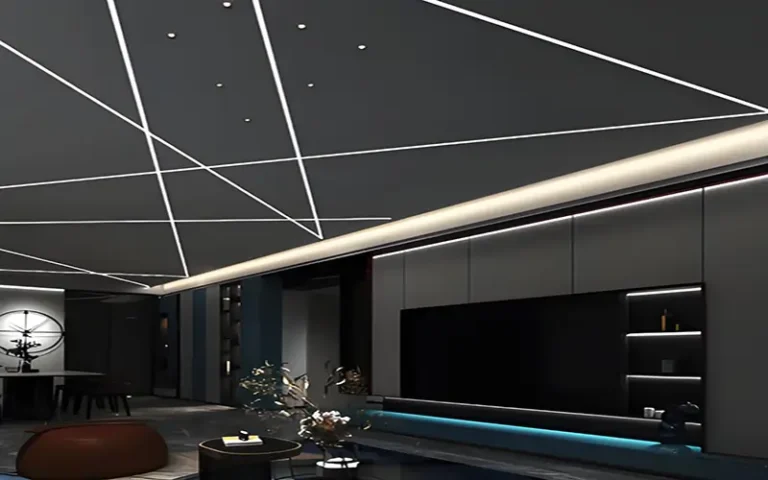How to Choose LED Tape Light to the Ceiling?
Choosing the right LED tape light for your ceiling can transform the ambiance of any room. Whether you want to create a comfortable atmosphere and modern look. LED tape lights provide flexibility and useful function. This guide will help you understand how to select the best LED tape light for your ceiling.
What Types of Ceiling Lighting are There?
When it comes to ceiling lighting, there are several options to choose from, each with unique advantages and suitable for different purposes.
Recessed lights: Installed on the ceiling, they have a clean look and no gaps.
Surface-mounted lights: Installed on the surface of the ceiling, the light is uniform and consistent.
False ceiling mounted: Installed directly on the false ceiling, mainly to set the mood.
Chandeliers: Suspended lamps that add a decorative element and can be used for accent lighting.
What is the function of the ceiling?
- Ambient lighting: General lighting of the entire room, not the main light, to create an appointment atmosphere.
- Task lighting: Focused light for specific tasks such as reading or cooking.
- Accent lighting: Highlight architectural features or artwork.
Which LED Strip Can Be Used for Ceiling?
There are many types of LED strips, each designed for different applications. For example, ceilings for architectural lighting, indoor home ceilings, high-end hotel ceilings, and more.
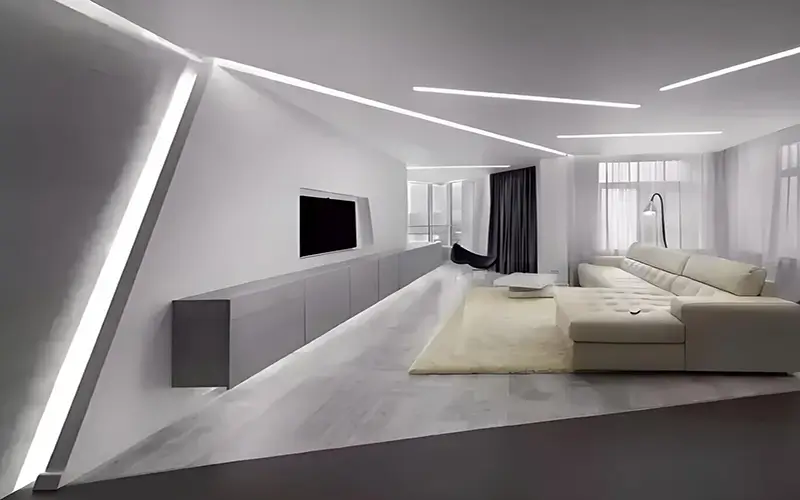
- Conventional high-density strips: widely used and suitable for most applications.
- High-brightness LED strips: provide brighter light, suitable for architectural and commercial lighting
- RGB LED strips: provide a color-changing function to create a dynamic look. Suitable for bars and atmosphere places.
- Waterproof LED strips: suitable for wet areas such as bathrooms or kitchens.
Which LED Tape Light are Suitable for Ceiling?
For ceiling installation, it mainly depends on the location, purpose, and environment where you install it on the ceiling.
Generally, high brightness and standard high-density LED strips are usually the best choice. They provide enough brightness and are available in a variety of color temperatures to match the room atmosphere you want.
How to Choose the Brightness of Ceiling LED Strip Lights?
First, we need to know that brightness is measured in lumens, and the appropriate brightness depends on the purpose of the room:
Living room: 1,300 to 3,000 lumens.
Kitchen: 3,800 to 7,500 lumens, especially in the work area.
Bedroom: 1,000 to 2,000 lumens for a warm atmosphere.
Bathroom: 4,000 to 8,000 lumens for clear visibility.
Which Color Temperatures are Suitable for Ceiling LED Strip?
Depending on the location of the ceiling, different color temperatures can be selected, which will affect the atmosphere of the room:
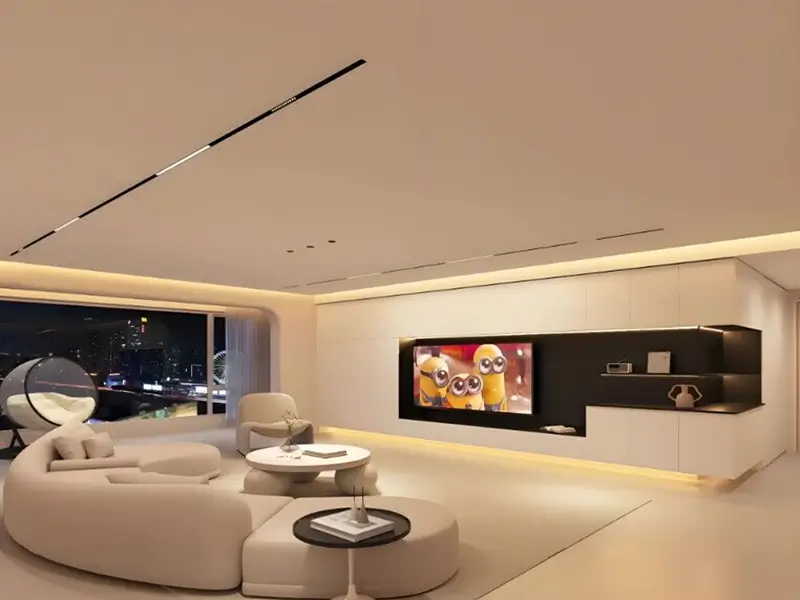
Warm white (2700K-3000K): creates a comfortable and pleasant atmosphere, suitable for bedrooms and living rooms.
Neutral white (3500K-4500K): suitable for kitchens and work areas, striking a balance between warmth and coolness.
Cool white (5000K-6500K): provides bright, clear light, ideal for task-oriented areas such as bathrooms and offices.
How to Installing LED Tape Light on the Ceiling?
Step-by-Step Installation Guide
Measure and Plan
Begin by measuring the length of the ceiling area where you intend to install the LED tape light. Strategically plan the placement to achieve uniform illumination.
Prepare the Surface
Thoroughly clean the surface to ensure the adhesive on the LED tape light adheres well.
Cut the LED Tape
Trim the tape to the necessary length at the designated cutting points.
Attach the Tape
Peel off the adhesive backing and firmly press the tape onto the prepared surface.
Connect to Power
Link the LED tape light to a suitable power supply, following the manufacturer’s wiring instructions.
Test the Lights
Switch on the lights to verify they function correctly and make any necessary adjustments to their placement.
Conclusion
Choosing the right LED tape light for your ceiling requires understanding the brightness of different lighting, selecting the right brightness and color temperature, and following a careful installation process. By considering these factors, you can create a well-lit, beautiful ceiling environment that enhances the ambiance of your home.
For more lighting tips and LED strip products, visit ESSENLED.
FAQs
When choosing LED strips for ceilings, consider the ceiling installation environment, brightness (lumens), color temperature (Kelvin), strip length, power requirements (watts), adhesive quality, and whether the lights are dimmable. Also, make sure the lights are suitable for indoor use and have an appropriate IP rating for your environment.
Yes, dimmable LED strips are suitable for ceilings because they allow you to adjust the brightness to suit different activities and moods. Make sure you have compatible dimmer switches and drivers to avoid flickering.
To prevent LED strips from falling, first clean the surface where they are to be installed. Then apply directly with the 3M adhesive of the LED strip. If the adhesive is not strong enough, use additional mounting clips, channels, or double-sided tape designed for LED strips.

